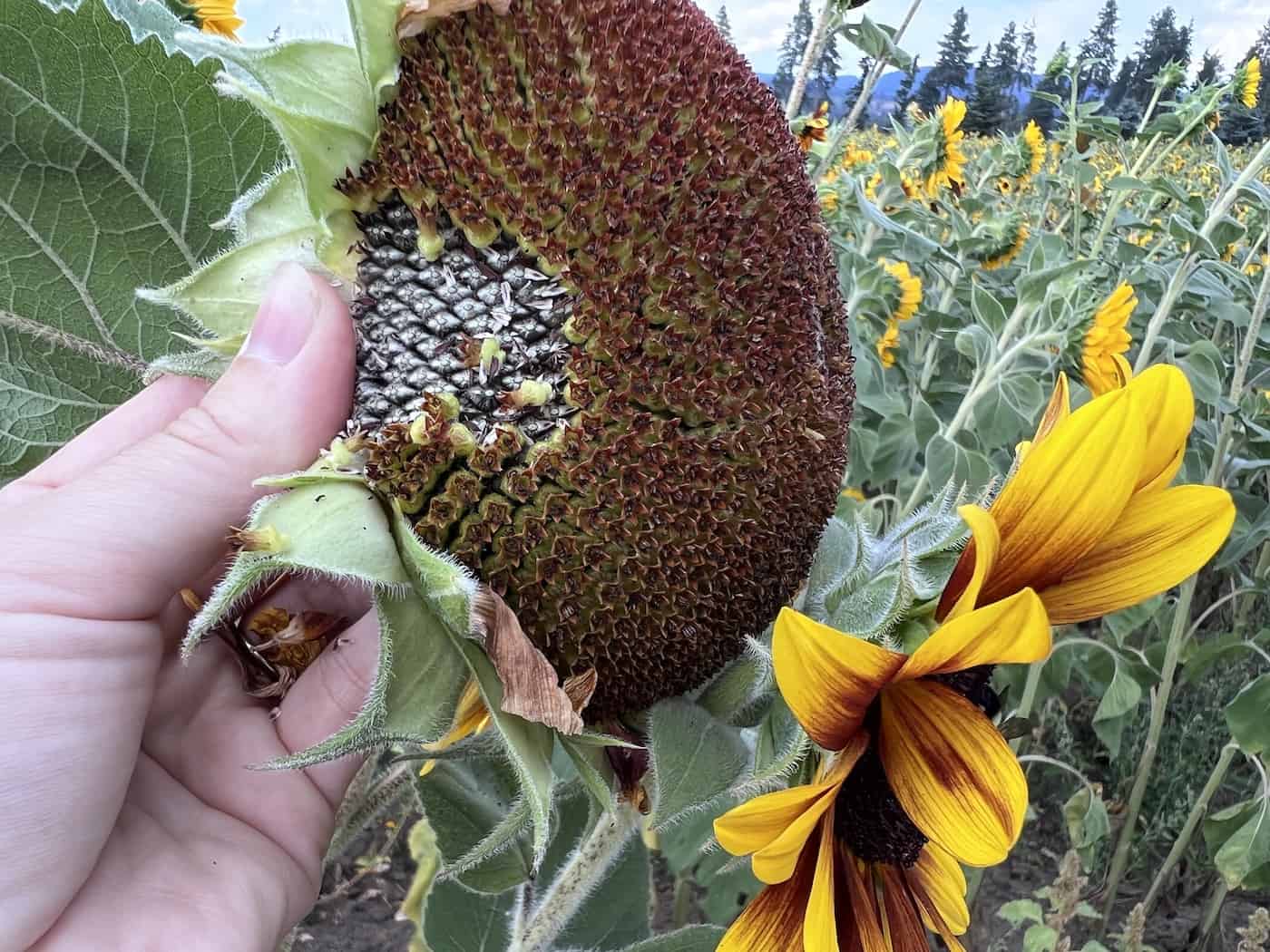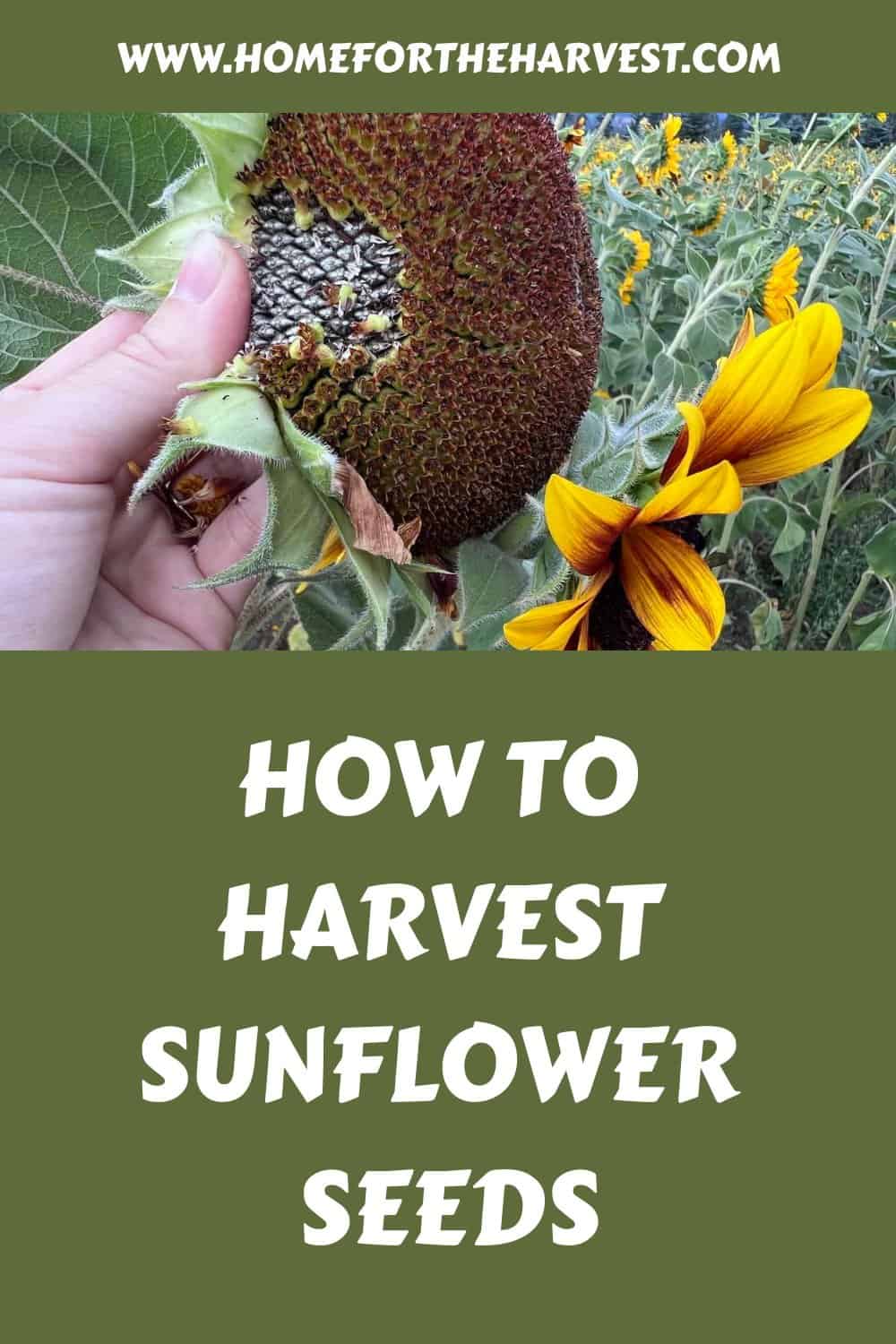To harvest sunflower seeds, wait until the flowers have wilted and the back of the flower head has turned yellow or brown. Cut the stem about 4 inches below the head and hang the entire flower upside down in a dry, well-ventilated area for about a week to dry.
Then, remove the seeds from the head by rubbing the back of the flower head with your hands, bending it, or running it over a mesh wire surface. or with a brush. Sift out debris and store the seeds in an airtight container in a cool, dry place until you are ready to use them.
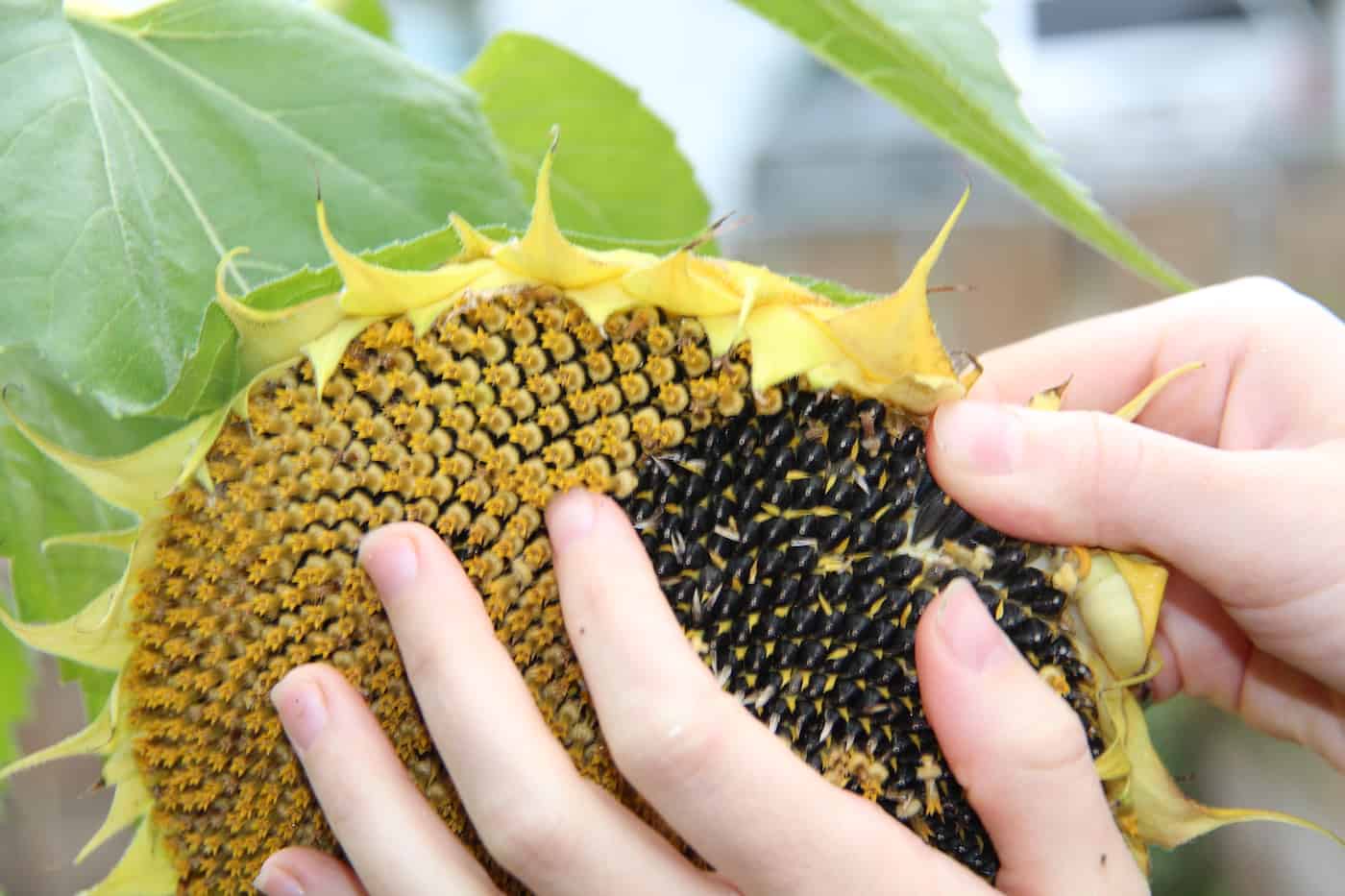
How to harvest sunflower seeds
Wait until the sunflower heads dry out completely on the stalk. This usually happens after the plants have been growing for about about four months. When the back of the flower head turns from green to yellowish-brown, and the seeds inside become loose, that is your cue that it is time to harvest.
To harvest sunflower seeds, wait until the flowers have wilted and the back of the flower head has turned yellow or brown. This indicates that the seeds are mature. Cut the stem of the flower about 4 inches below the head and hang the entire flower upside down in a dry, well-ventilated area for about a week to allow the seeds to dry completely.
Once the seeds are dry, you can gently remove them from the head by rubbing the back of the flower head with your hands or a brush. The seeds should fall out easily. You can then remove any remaining bits of flower or stem and store the seeds in an airtight container in a cool, dry place until you are ready to use them.
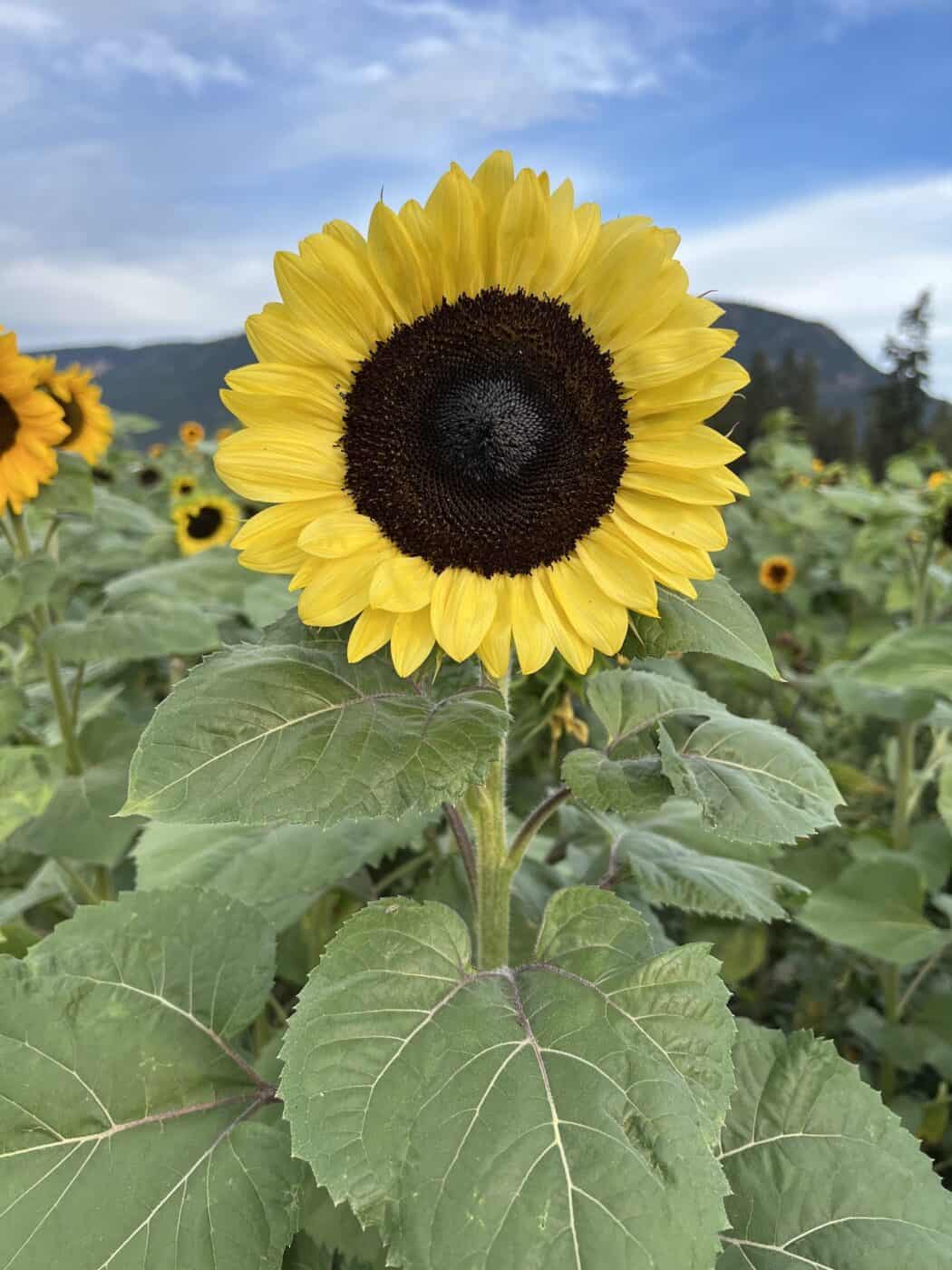
Harvesting steps
Here are the basic steps for harvesting sunflower seeds:
- Wait until the flowers have wilted and the back of the flower head has turned yellow or brown.
- Cut the stem about 4 inches below the head.
- Hang the entire flower upside down in a dry, well-ventilated area for about a week to dry.
- Remove the seeds from the head by rubbing the back of the flower head gently with your hands, bending it, or running it over a mesh wire surface.
- Sift out debris, as excess plant matter can lead to mold growth when seeds are stored.
- Store the dry seeds in an airtight container in a cool, dry place until you are ready to use them.
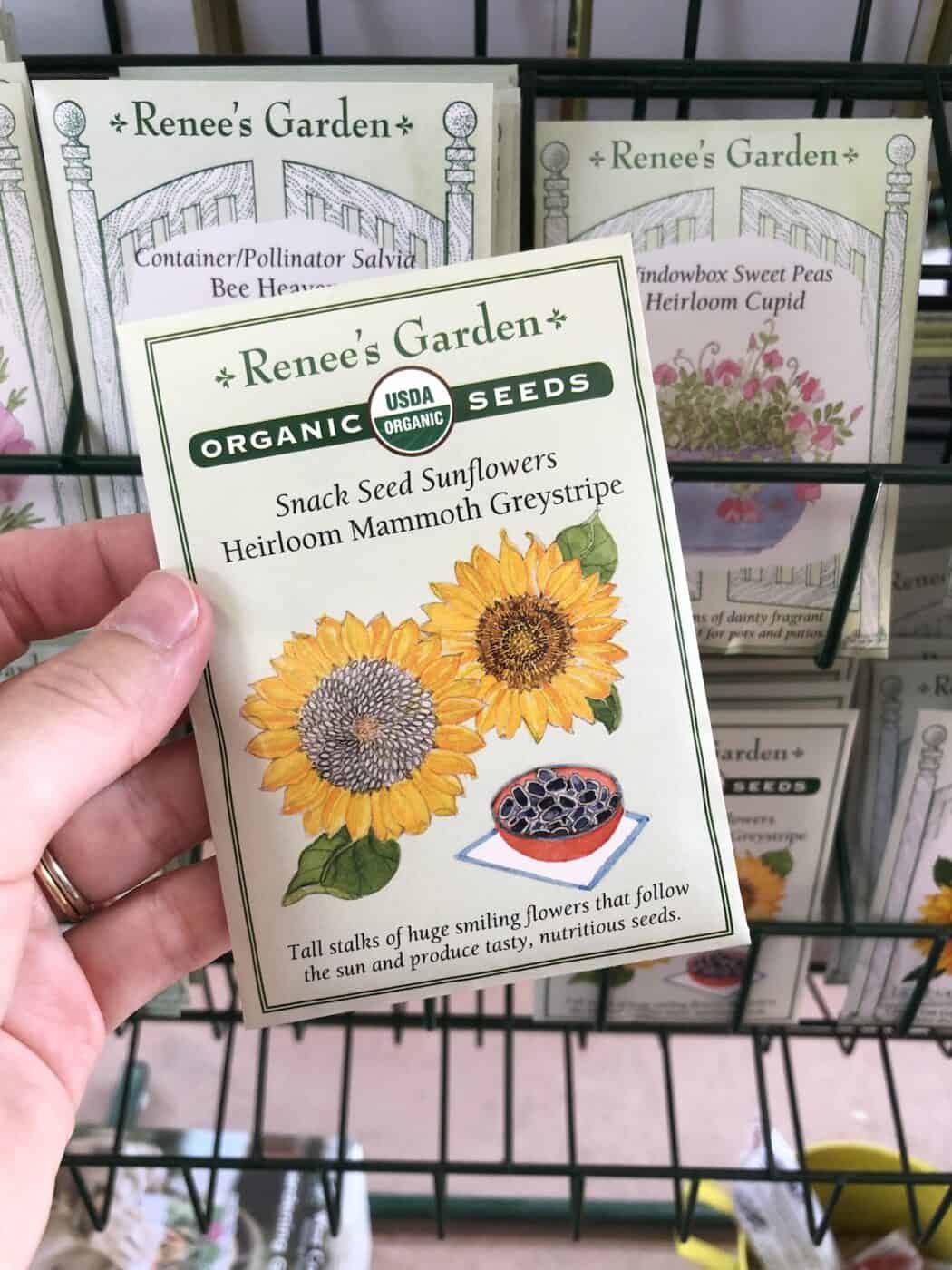
Best sunflower varieties for eating the seeds
When it comes to harvesting seeds from sunflowers for eating (as opposed to for seed saving for next year’s garden), some varieties tend to work better than others. All varieties are edible, but the larger grey and white stripe varieties provide a much more satisfying experience (in terms of eating them whole) than their smaller dark counterparts.
The high-protein variety of sunflower (generally for eating whole) is highly sought after and has created its own distinct market, separate from the oil type. Sunflower varieties’ small dark seeds (like those of the Black Oil sunflower) are much better for pressing sunflower oil than they are for eating whole. Varieties with larger striped seeds that are eaten whole are usually called confection or non-oil types.
Here are some of the tastiest and most commonly eaten confection varieties of sunflower seeds:
- Mammoth Grey Stripe
- Mongolian Giant
- Giganteus
- Lakomka
- Donskoy
- Turkish White
- Zaporizhia
Using sunflower seeds after harvest
Deliciously sweet and nutty, confectionery sunflower seeds are an indulgent bakery product and a nourishing addition to natural health products and healthy snacks or for direct consumption with the hull on or off. You can even enjoy them raw or baked!
There are three categories of non-oil sunflower seeds:
- In-shell quality seeds: largest, generally salted, roasted, and packaged (in-hull) for consumer retail
- Ingredient quality seeds: medium-sized, generally hulled and sold as kernels to food producers that add them to their products
- Birdfeed quality seeds: smallest, low-quality seeds packaged as birdfeed or hulled for other pet food uses
In-hull confectionary seeds are usually 8-10 mm long. Some of the largest seeded cultivars can get up to 30 mm long in good growing conditions and are usually selected as gourmet seeds. Seeds under about 8 mm long are typically for hulling as ingredient-quality seeds. Seeds under about 7 mm long are typically used for bird food.
Cultivars that have a rounded hull are typically called Dakota-type sunflower seeds. Varieties with longer skinny seeds are simply called Long-type.
“What is specific for growing confectionery sunflower is that the big producers perform the harvest when the seeds have low moisture content, < 9%, and that the seed is sent to processing immediately after the harvest. Since the seed size defines confectionery sunflower quality and price, special attention is paid to the separation of the seeds by their size during processing.”
Confectionery sunflower breeding and supply chain in Eastern Europe, by Nada Hladni and Dragana Miladinović
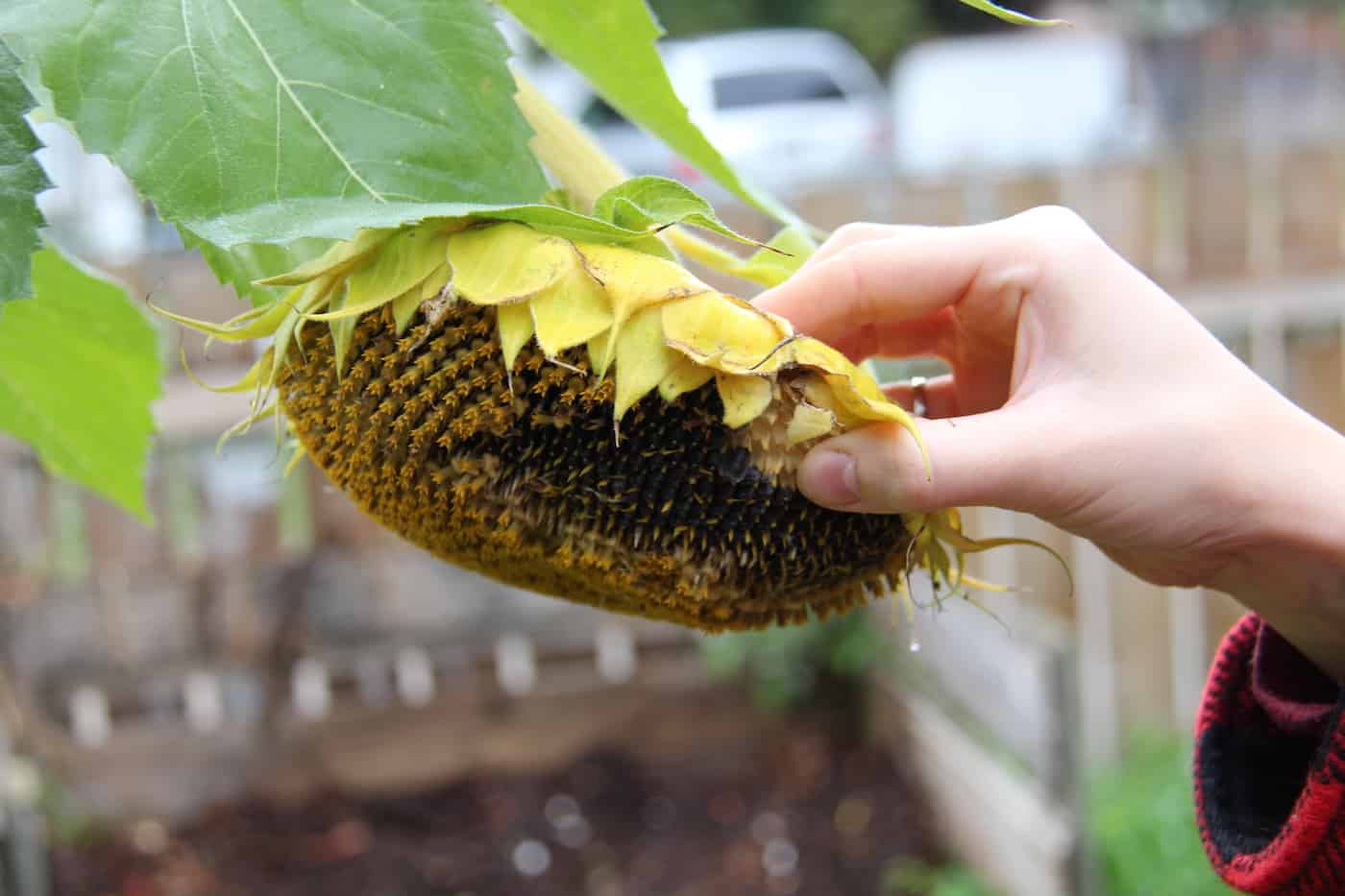
Storing sunflower seeds
Sunflower seeds can be stored for the longest period when the seeds are clean, dry, and cool. Unprocessed sunflower seeds store best at a moisture content of at or below about 10% or so.
Maintaining your crop’s ideal temperature and dryness is key to preserving it for the longest time possible. Uncontrolled mold growth will ensue if these storage conditions are disregarded, so be sure to keep them cool and dry!


